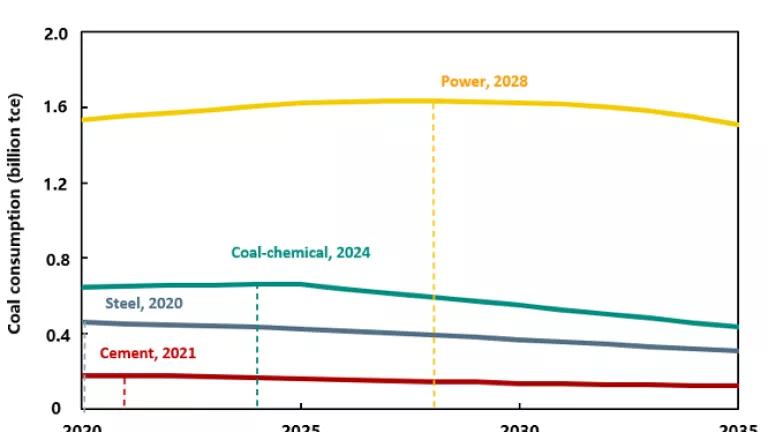Today, Chinese President Hu Jintao will be arriving in Washington, D.C., for a three-day U.S. visit. This is the second state-level visit between him and President Obama, including Obama’s visit to Beijing in November 2009, which set forth an ambitious energy and climate cooperation agenda between the two countries. These cooperative initiatives have steadily moved forward in the past year, including finalization of the funding, research consortia members and work plans for the three US-China Clean Energy Research Centers on building efficiency, carbon capture and storage, and electric vehicles; continued meetings on improving cooperation on efficiency and renewables; and the formation of the Energy Cooperation Partnership to explore how U.S. and Chinese clean energy companies can help meet the energy and climate goals of each country.
Meanwhile, Chinese officials at home are taking stock of the progress that China has made on its energy and climate goals in 2010 and in the Eleventh Five Year Plan overall, and signaling that there will be expanded efforts on these issues in the 12th Five-Year Plan (2011-2015). The plan will be issued in March during the annual meetings of the National People’s Congress and Chinese People’s Political Consultative Conference.
At a national work conference on energy held January 6-7 in Beijing, outgoing National Energy Administration Director General Zhang Guobao laid out a plan to meet China’s long-term non-fossil fuel energy target of achieving 15 percent of its energy from non-fossil sources by 2020. Zhang Guobao announced a robust expansion of clean energy over the coming decade, starting with several new gigawatt-scale windfarms (a gigwatt is roughly equivalent to the annual electricity consumption by 2 million homes in China). The market will move from what Zhang called “purely onshore” to a dual focus on on-shore and off-shore potential. A 500MW solar project in northwestern Qinghai Province will also be opened for bidding. This is on the heels of the recent deal between First Solar and China Guangdong Nuclear to build a 2GW thin film solar photovoltaic farm over the next ten years. There are also plans for 140GW of new hydro by 2015. (A full listing of China’s new clean energy targets is here; Chinese only.)
Over the last five years, according to Zhang, China saved 1.8 billion tons of coal, much of which is due to clean energy deployment. Approximately one-sixth of this saving is also due to the success of the flagship program to replace small, inefficient factories and power plants with state-of-the-art technologies. (The full description of China's five-year progress in clean energy is here; original Chinese only.)
Looking ahead, in order to meet its 2020 target to increase the proportion of non-fossil fuels in the primary energy mix to 15 percent, Zhang laid out an interim target of 11.4 percent by 2015. Over half of this will be met by increased hydropower. (This was Zhang’s final work conference as head of the National Energy Administration; he will be succeeded by Liu Tienan).
As I blogged about here when the draft proposal for the 12th Five Year Plan was issued, the next five-year plan will take several significant steps aimed at guiding China along the path toward a low-carbon economy, namely:
- Developing seven new strategic industries, many of which are crucial to clean energy
- Adopting binding energy intensity and carbon intensity reduction targets consistent with China’s Copenhagen pledge
- Strengthening the target responsibility system for energy savings and emissions reductions
- Improving its energy and GHG emissions monitoring and statistics
We also heard from National Development and Reform Commission (NDRC) Chairman Zhang Ping at the conference that the central government has reduced its economic growth target in order to take into account the toll on natural resources:
We should maintain a certain amount of economic growth but also be mindful of energy and environment goals. GDP growth targets should not be set too high, as energy use is not unlimited.
He specifically called on local governments to consider the burden on energy and natural resources when setting their economic targets.
On January 12, NDRC Vice-Chair Xie Zhenhua and senior climate negotiator Su Wei announced details of the “National Plan to Address Climate Change” (国家应对气候å˜åŒ–规划) to be included as a separate chapter in the 12th Five-Year Plan to be issued in March. Su Wei announced that the share of non-fossil fuel energy will join energy intensity and carbon intensity as binding targets. (We discuss the relationship between these targets in our recent working paper on China's carbon intensity target.)
Following the hottest year on record according to the U.S. NOAA (2010 was tied with 2005 for surface temperature readings dating back to 1880), and a year when China experienced an “extremely abnormal climate” of high rainfall and hot days according to the China Meteorological Administration (Chinese only), it is appropriate that the governments of both countries have elevated cooperation on climate and energy to the top of their bilateral agenda. In addition to expected progress this week on the US-China Clean Energy Research Centers, we will be watching to see whether the summit results in a joint statement and what it might offer concerning future bilateral cooperation on climate and energy issues. We also expect more detailed announcements from China over the next two months on its medium- to long-term climate and energy plans, continued progress on the federal and state levels to address climate change in the United States, and deepening cooperation between both countries to developing the technologies and policies to transition to a clean economy.
This blog was coauthored with NRDC China Climate Fellow Michael Davidson and NRDC China Climate and Energy Policy Director Alvin Lin.



